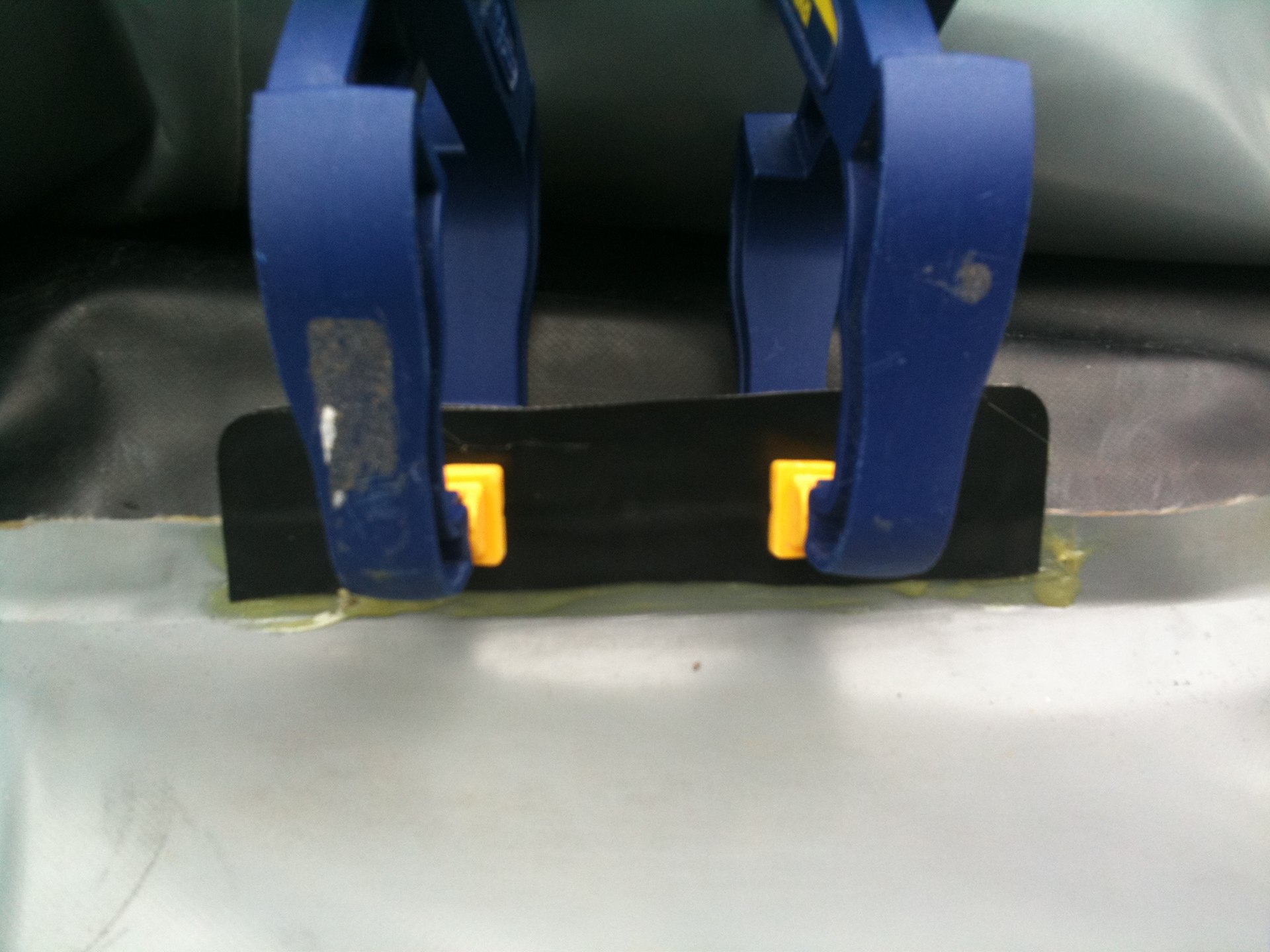There's nothing that induces despair so completely as a job that cannot be done.
Case in point. The "Air Keel" in the Achilles Dinghy, Scout. This was a cause for despair.
To keep a boat tracking reasonably well, it needs a keel. Power boats have a keel that is degenerated dow to a V-shaped forward part. Scout -- the Achilles SPD-4DX Dinghy -- is no exception. It has a V-shaped forward part because of an Air Keel bladder under the floor boards.
Except, of course, when the bladder side wall ripped out from being piled with snow all winter. It's a 4" space where the seam completely pulled apart. The crushing weight of snow and rainwater, plus being loaded wrong-side up in the Dinghy Rack did her in.
Both -- BTW -- may be my fault. What I should have done was checked on her. We were up here almost every weekend in the winter. But I didn't. What I should have done was flip her over to drain. Instead, the air keel ripped.
No V-shaped forward part. No dinghy.
Darkness
I had -- fortunately -- purchased the official Achilles Dinghy Patch kit.
I followed the directions: sanded it, washed it in mineral spirits, put on a layer of glue and waited for it to nearly dry, put on another layer of glue, waited for it to get tacky. I clamped it thoroughly. And there was no more weekend. So I was forced to wait a week.
The foot pump for the inflatable was pretty bad. I went to West Marine and bought the cheap "Mini Turbo" Inflator Pump. "Includes Universal Adaptors to fit all common valves". That was a flat-out, bald-faced, fraudulent, you-owe-me-money lie. It had two adaptors that were useless for my Dinghy. What I should have done was just buy the large pump and not believe the label on the small pump.
The pump was crummy and the patch didn't hold. So, simply gluing inside the seam won't do. And there's no good way to wrap anything around the outside of the seam: it's flat.
I was infuriated. Slamming doors on the truck and kicking the helpless dinghy infuriated. Enraged at crap seam, crap glue, crap pump, crap dinghy.
The real reason for despair? I have no idea what I should have done.
A Glimmer
In the morning I had a spark of hope. A seemingly not-stupid plan. I would create a new, wider seam enclosing the old seam. A seam sandwich, with patch material holding the original seam in a seam sandwich.
Seems like a good idea. Time will tell.
Note that the fine print is the following. "The glue included in this kit is meant for temporary repairs only - we suggest ordering Shore Adhesive (# SA-12) or Apollo 2 part Hypalon glue (#2001) Each sold separately."
Sigh. Not the right glue. No reason for optimism. What I should have done was notice the fine print. On another web site.
Darker Still
Beyond the dinghy, a messy and complex job is lies buried in the engine. Cars have "radiators". Boats have "heat exchangers". They're the same thing. Except boats exchange heat with raw water. Cars radiate heat into the atmosphere.
Boats have metal parts of various types. In impure water -- like the ocean -- the various kids of metals participate in galvanic circuits. To minimize this, naval architects do two things: (1) ground everything to one point so that there's no stray current from the batteries and (2) provide a sacrificial anode that is expected to participate in the galvanic circuit. It's replaced from time-to-time and the real useful bits remain intact.
There's a zinc anode inside the heat exchanger. Taking it out is painful and messy because it's almost inaccessible and raw cooling water will come spraying out of the heat exchanger.
We thought we had found two in the spare parts. How bad can it be?
Gloom set in when we could not find the spares. We turned the boat upside down. I was sure that I saw them, and pretty sure where I put them. But they were nowhere.
Mixed Signals
So there we were, engine partly disassembled, dinghy irreparable. At this point, our project manager at Deltaville Boat Yard raps on the hull.
They're going to launch us and step our mast from the repair dock.
Sometime in the next hour and a half!
That's Great News at a Bad Time. But, we know that it's always darkest just before the dawn. And we know that the wise folks have waited patiently, tended their lamps and were ready when things started happening. As Louis Pasteur said, fortune favors the prepared mind.
Any Success Would Be Good
Among the three things: Dinghy, Rigging and Zinc Anode replacement, screwing in a new zinc seems like it's actually achievable. Run out to West Marine, buy a zinc (and a spare) and climb back down in to the engine room and get ready to launch.
Of course, launching isn't that simple. We need dock lines to launch. We need cleats to which we can attach the dock lines. And guess what we don't have on our newly-repaired foredeck. Right. Cleats.
We can scramble. We can get out the fenders and the dock lines, replace the engine zinc, and stand-by for launch.
Or, perhaps, no launch. Gloom.





